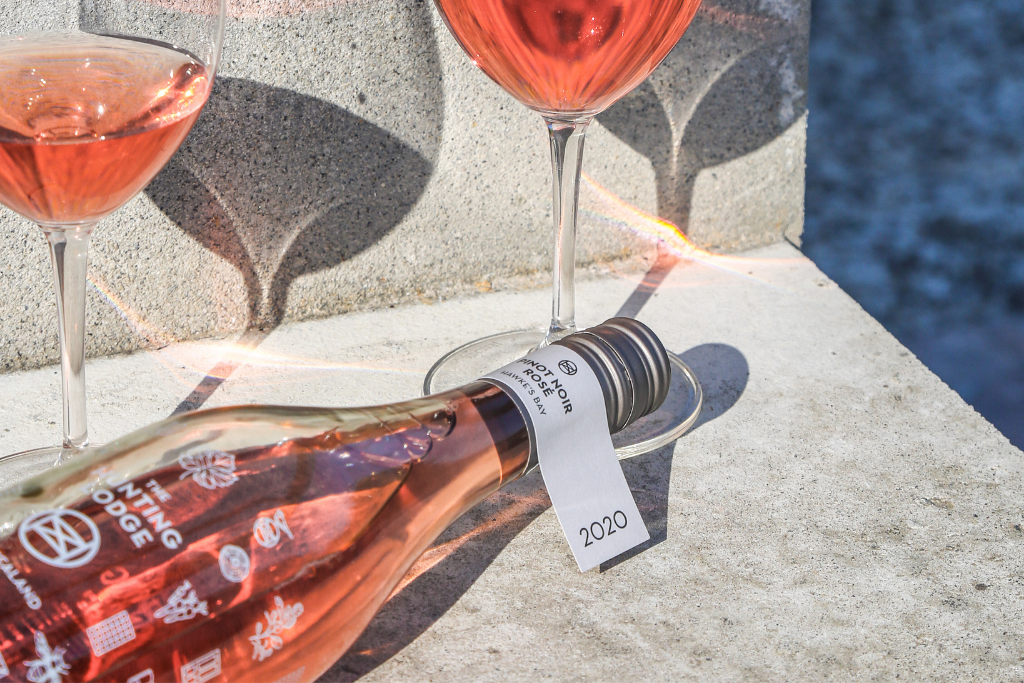
Why is it so difficult to choose wine?
These days, shelf appeal is a critical component in selling wine, so marketers are getting very creative with eye-catching packaging. Subsequently, it’s increasingly tricky to make an informed decision when there are so many pretty labels in front of you.
Plus, there are so many varieties! There are over 500 wineries in New Zealand alone – an amazing number for such a little country and a real testament to the quality we produce. Then there are all the wine grape varieties – 10,000 in total and only 1,300 or so are used commercially. That’s a hefty multi-choice.
So unless you know a lot about wine, it can be challenging. Consumers might be familiar with grapes like Pinot Noir, Syrah, or Chardonnay, but understanding all the different varieties and their origins can be very complex. That’s why it takes many years of study and is notoriously difficult to become a ‘Master Sommelier.’
So what can a mere wine lover do?
Just like the proverbial book, it’s what’s inside that counts. Of course, you can’t always try before you buy, but you can always read.
So instead of falling for the first pretty bottle you see, take some time to read the label on the back. A good wine should tell you a little bit about itself. But not too much. Back labels can give you some interesting background on wine but sometimes contain a lot of waffle.

Read a wine bottle in seven easy steps:
1. Note the variety
If it’s one you’ve liked before, you’re off to a flier. But if not, and you’re keen to try, that’s great. When it comes to wine, it’s good to be open-minded and flexible. If you’ve found a brand that seems consistent with the style you enjoy and you like their Pinot Gris or Sauvignon Blanc, don’t be afraid to try a unique varietal from their range. Some fantastic wines originated overseas that are very similar in style to our local faves. Start with something approachable like an Albariño or Grüner Veltliner – if you’re after a white. Perhaps a Gamay if you enjoy a Pinot Noir, or a Tempranillo or Lagrein if you enjoy a bigger red like a merlot.
2. Location, location, location
As a general rule – single region wines are more premium than multi-region, sometimes referred to as a “New Zealand Blend.” It’s usually best to go for those with a single region on the label, like “Marlborough” for example.
As far as regions go, for local wine, you can’t go wrong with Pinot Noir from Central Otago or Martinborough, Chardonnay from Hawke’s Bay, or Sauvignon Blanc, and other aromatic whites from Marlborough.
3. Clock the year
The year or ‘vintage’ is very important. For example, fresh, fruit-driven wines like Sauvignon Blanc and Rose are usually enjoyed within the first few years of release. While bigger, barrel-fermented whites and robust reds will actually ‘soften’ and develop more integrated flavours after several years in bottle.
4. Dry or Sweet? Soft or Crisp? Stick to the facts
Some back labels take it too far with warm fuzzies. Try to navigate through the fluff and focus on the taste descriptors that will inform the style of wine. In wine speak, dry is the opposite of sweet, and soft is the opposite of crisp. Terms like barrel fermentation of oak-aged would indicate there’s some oak influence (vanilla or buttery characters). These wines tend to be more robust full-bodied styles. If you’re after a crowd-pleaser that’s a little more ‘easy drinking’, try something fresh and fruity, like a young Sauvignon Blanc or Rosé.
5. Warm or Cool Climate?
Whether a wine is from a warm or cool climate region directly impacts the style of wine. Regions with a warmer climate tend to produce higher sugar wines, resulting in sweeter and usually more robust, powerful wines. If this wine style sounds like you, look for taste indicators like “ripe” and “sweet tannins”. On the other hand, regions with cooler climates usually produce more elegant and fresh wines with lower natural sugars and higher acidity. Look for taste indicators like “balanced”, or “crisp and dry”. All of New Zealand is technically classed as a “cool climate”, however, our warmer climates include Hawke’s Bay, Gisborne, Auckland, and further North.
6. Sulfites are not the enemy
Yes, we know it feels a little dubious when you read “contains sulfites” on the back label, but try not to get too caught up on this. Most sulfites in wine are created naturally during the fermentation process, and to put things into perspective, dried fruit contains more sulfites than wine. Sorry to say we can’t blame a hangover on natural or added sulfites. Most food you eat daily includes more sulfites than the wine you drank last night, so you could try blaming your hangover on the bag of potato chips you devoured at 2 am?
7. Shiny award stickers don’t always signify greatness
Not all that glitters is gold! But here in New Zealand, we’re lucky enough to have a handful of damn fine, highly respected wine critics. You’ll get familiar with the good reviewers and the legitimate wine shows, and you can generally trust their accolades, especially if you’re planning on branching out and trying something new. Some New Zealand faves include Wine Orbit, Michael Cooper, and Cam Douglas. Remember, though, everyone’s palate is different, and no one can tell you what you do and don’t like!
Do you have any more advice?
Visit vineyards
And do lots of tastings. Then you can try before you buy and hear all the amazing stories behind each wine. There are so many cool wineries around our country. Some people believe wine tastes better at the source where it grows. Take a glass with you out in the vineyard and see for yourself. If you’re in Auckland – come and see us in the beautiful rugged West!
Take notes
People often don’t know what they like in a wine, just that they like it! This is fine, but if you start to learn what you like or dislike, this will open up a whole world of new wines. And it will mean fewer disappointing purchases and more stunners discovered.
Ask questions
If in doubt, don’t be afraid to ask the salesperson, sommelier, person next to you. People love to be asked for their recommendations, and who knows, you might find a new go-to fave.
Pro-tip
Try using an App like “Vivino” to get consumer reviews at your fingertips.










